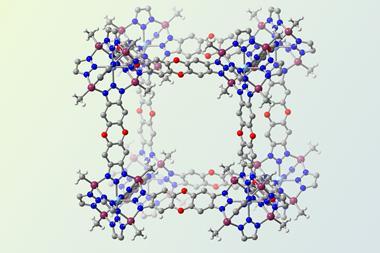Aerogel can suck up hydrocarbons from water, be wrung out and then reused
Japanese researchers have developed a marshmallow-like material that can mop up hydrocarbons like a sponge and can then be wrungout.1 The work could one day lead to a cheap and simple solution for cleaning up large oil spills such as one that decimated the Gulf of Mexico in 2010.
Although similar materials have been made before, they have had shortcomings for large-scale clean-up operations including a lack of hydrophobicity, difficult or expensive production methods and an inability to be reused. Now, researchers at Kyoto University have made marshmallow-like macroporous gels that are free from all of these drawbacks.
The team first reported their material in 2011 when they were looking at ways to make transparent and flexible porous aerogels - which are typically solid and rigid - using dimethyldimethoxysilane (DMDMS) together with methyltrimethoxysilane (MTMS).2 Unintentionally, they ended up with an opaque material but the team have since discovered that it has remarkable oil-absorbing properties and a wide temperature stability.
‘We first measured fundamental properties of the porous material, such as density, porosity, pore size and volume, mechanical properties and the surface property,’ says co-author Kazuyoshi Kanamori. ’During the course of these measurements, we hit upon the idea of soaking up oils because the marshmallow is hydrophobic and flexible. We tested the separation of hexane and water first and hexane was absorbed completely while the amount of water did not change at all.’
Importantly, the oil can be squeezed out and the material reused. Experiments have also shown that it can work under harsh conditions ranging from 300°C to -196°C. However, the team have yet to test the material’s performance on highly viscous and complex crude oils.
‘We could not test absorption of real crude oil, because crude oils are not easily available,’ explains Kanamori. ‘We instead tested using a mineral oil that has a viscosity similar to medium crude oil. The kinetics were a bit slow, but there was no problem for absorption.’
Making the marshmallows only requires a simple and inexpensive sol-gel process using reagents that are fairly readily available. However, Kanamori says challenges remain for producing the material in bulk quantities that would be needed for an oil spill. ‘You cannot produce a huge amount of the marshmallow by a continuous process,’ he says. ‘So, in the case where you need huge amounts of the marshmallow for tonnes of oil spilled from an offshore oil well or from a large ship accident, producing the marshmallow in limited time is difficult.’
However, there could be other applications. ‘Dealing with oil spills is by no means the only potential application for these materials,’ comments Peter Budd a polymer chemistry expert at the University of Manchester, UK. ‘There are many situations where there is a need to remove organic compounds from an aqueous medium, including the treatment of wastewater from industrial processes and there is potential to use chemistry to tailor these materials for a wide range of separations.’












No comments yet